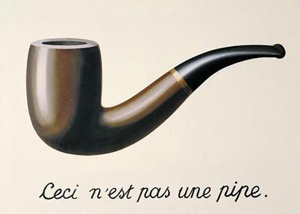Your language has an urgency throughout, partly because of the brilliant use of poetics, such as compression, metaphor, prosody: “Me, I was another story. Salt frosted patterns, like paper blinds, and the whole precious world was inside this car: this man, this dog, this quiet day.” Do such sentences arrive complete to you?—or do you stay up all hours of the night to create the gorgeous sounds, meanings, and rhythms? In others, please share your secrets. We promise not to tell anyone.
Thanks for the kind words, you’re making me blush. I don’t have any secret methods. For me, it’s guesswork, instinct, and being patient with myself. But I suppose I have priorities, if not methods. Making the imagery vivid is one. Keeping the rhythm natural is another. People tell me my prose has a cadence, and it always surprises me, because I’m not exactly writing with a metronome. But I do read it aloud, a lot. And if it doesn’t flow easily off the tongue, I rework it.
The sentence you picked got rewritten a few times, if memory serves. I was having trouble with the description of the frosty glass. It kept sounding like a Christmas song. It’s pretty familiar territory, frosty glass. I nearly cut that whole “Newark” section.
Recently, we noticed a trend in flash fiction toward an absence of dialogue. Your piece bucks this trend. What’s essential to making dialogue work in flash fiction? And was your use of dialogue in this piece a conscious decision?
My dialogue too is a matter of instinct. I often hear the dialogue early in the process, use that as an armature. (I talk to myself a lot.) Then I work around it to set up imagery. And I don’t worry hard about plot at all. I’m not big on plot.
I have no real clue what makes dialogue work in flash. Keep it lean, obviously. One trick is to have your character talk to the dead. Then there is no answer. Cuts the dialogue in half. Talking to animals also works.
I don’t recommend characters giving speeches, I suppose. If you’re going that way, may as well let that character be the narrator. You probably have the voice down, if your character is pontificating. May as well tell the story in the voice.
What do you see as the challenge of creating “juxtaposed” flash pieces, such as “Four Stops,” with its four sections? What is the key to making them work as well as yours does?
I actually think of it as a collection of similar moments. I was obsessing more on what they have in common than the contrast between them. I started out with more “stops,” and cut down to these four because they all have the same basic plot: character stops the car and encounters a surprise about herself. Her expectations, her hidden priorities, her wishes come to the surface.
I suppose this is why I like working in series. You can look for patterns in the pieces, and arrange them, like Lego, and create a bigger shape.
What does a poet/ukulelist spend her time doing, besides worshipping at the altar of Tiny Tim? Oh tiptoe from the garden / By the garden of the willow tree / And tiptoe through the tulips with me.
Did you ever hear recordings of Roy Smeck? Now that’s a uke hero.
I spend a lot of time at readings, and not just on the mic, but listening too. It’s a New York luxury, readings every night of the week if you want. Some of them are mediocre. A lot of them are mediocre. But the good ones make it worth sitting through all the dreck. And I find it inspires me to write.
I also walk a lot. I live in a flat place, so it’s easy. And I have a great writer’s group. We meet every couple of weeks and keep each other honest. I’m working on a second novel. Trying to find a home for the first. Oh, and there’s my sweetheart too. I suppose he gets some of my time.
The 2005 Edge Annual World Question (www.edge.org) asked a question that the BBC called “fantastically stimulating.” One year later, we ask you this same question: “What do you believe is true even though you cannot prove it?”
I believe there is some kind of karmic return when you give. Like if I give money to a cause I believe in, I never have trouble affording it. The bank account fills back up, somehow. This has been true for me in lean times as well as fat times.



 The core workshop of SmokeLong Fitness is all in writing, so you can take part from anywhere at anytime. We are excited about creating a supportive, consistent and structured environment for flash writers to work on their craft in a community. We are thrilled and proud to say that our workshop participants have won, placed, or been listed in every major flash competition. Community works.
The core workshop of SmokeLong Fitness is all in writing, so you can take part from anywhere at anytime. We are excited about creating a supportive, consistent and structured environment for flash writers to work on their craft in a community. We are thrilled and proud to say that our workshop participants have won, placed, or been listed in every major flash competition. Community works.